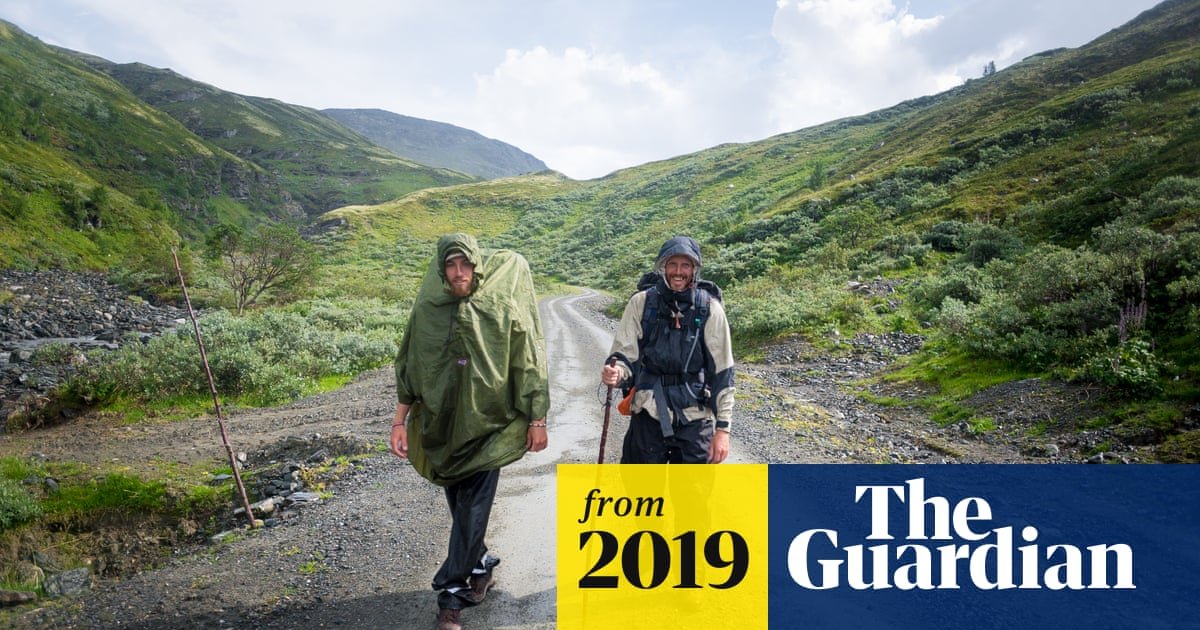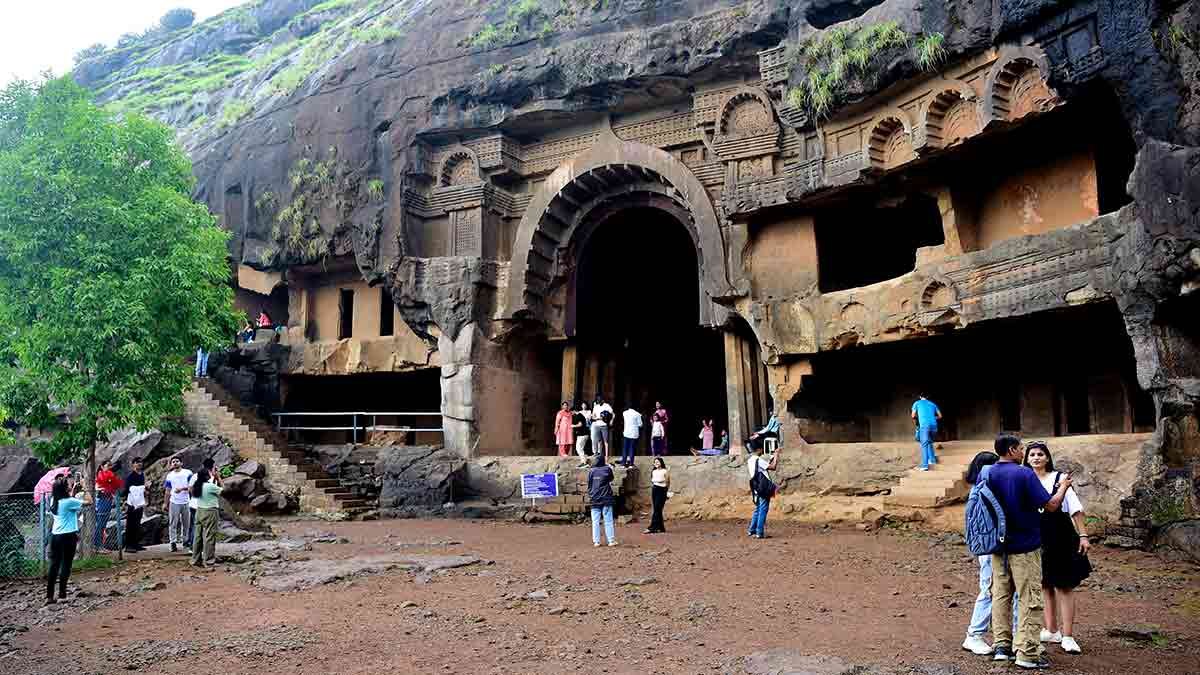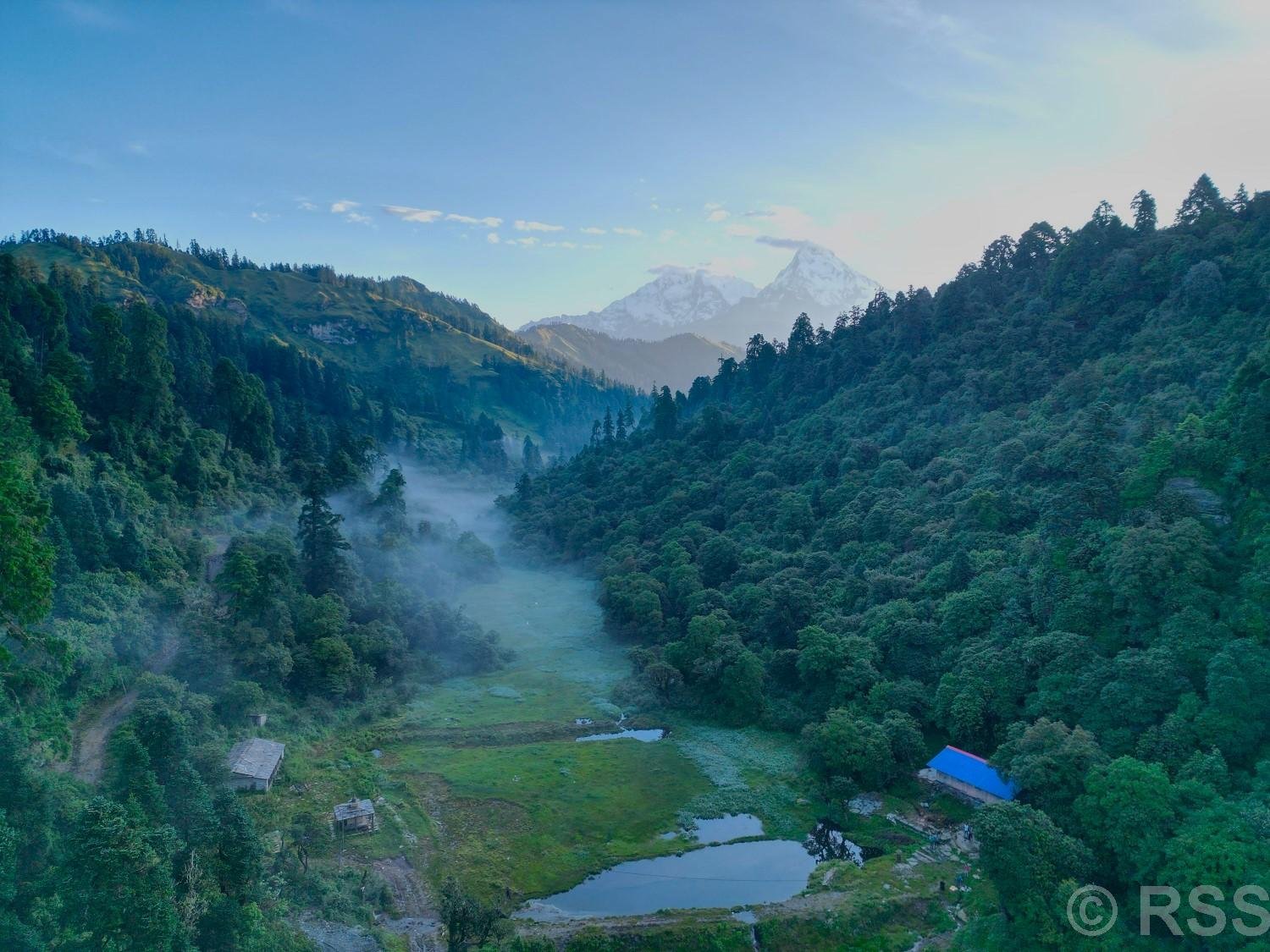Spiritual Travel
10 of the best pilgrim routes in Europe: readers’ travel tips | Walking holidays

Winning tip: Pilgrims’ Way, Winchester to Canterbury
A 10-day pilgrimage from Winchester to Canterbury, following Walking The Pilgrim’s Way by Leigh Hatts (Cicerone), included many ups and downs, both literal and emotional. There are many glorious parts of the walk, but the one that took my breath away was the hard push up Hackhurst Downs in Surrey, through a gorgeous yew-lined avenue, which then opened magnificently on to Blatchford Down. The splendid views from the top are well worth the ascent. To get the most of the pilgrimage, make sure you go off-path to visit the many divine little churches along the way, especially 900-year-old St Benedict’s in Paddlesworth (near Maidstone), Kent.
britishpilgrimage.org
Kirrily Long
St Conan’s Way, Highlands
Wildflowers, waterfalls and rainbows – there can hardly be anywhere more lovely and more varied to walk than Argyll in June. I walked St Conan’s Way from Dalmally to Iona, part of a planned pilgrimage route from St Andrews. I went with a friendly small organised group and was left with an enduring sense of replenishment. After 100km of walking (six days) and two ferry crossings, we reached Iona, a destination for pilgrims since the seventh century.
britishpilgrimage.org
Sarah Akehurst
Profile
Readers’ tips: send a tip for a chance to win a £200 voucher for a Coolstays break
Show
Guardian Travel readers’ tips
Every week we ask our readers for recommendations from their travels. A selection of tips will be featured online and may appear in print. To enter the latest competition visit the readers’ tips homepage
–
St Margaret’s Way, Edinburgh to St Andrews
Last Easter I followed St Margaret’s Way from Edinburgh to St Andrews. It’s a beautiful and varied route – west and over the Forth Road Bridge, back east along the Fife Coastal Path, then north at Shell Bay, with easy terrain that took four days to walk. My sunrise starting point was St Giles’s Cathedral in Edinburgh, where the warden was kind enough to let me in before hours. I wild camped: in the ruined 12th-century St Bridget’s Kirk, in woods near East Wemyss, and by the loch at Kilconquhar. Cafes in coastal towns served haggis-heavy breakfasts. I stayed in cheap hostels at either end of the walk.
thewayofstandrews.com
Sam
Via Podiensis, France
I’ve walked many of the pilgrim routes across Europe and they are all beautiful but my favourite is the Via Podiensis, from Le Puy in south-central France to Saint-Jean-Pied-de-Port in the Pyrenees. The 700km route meanders south-west through deep gorges, over rolling hills and by fields of sunflowers. The villages and towns are rustic perfection. Accommodation for pilgrims comes in the form of gîtes d’étape (walkers’ hostels) and is basic but cheap (€5-€10) or in gîtes that provide dinner, bed and breakfast for around €30. The walk takes just over a month but can be done in shorter stages.
Alison Jilks
St Olav’s Way, Norway
This route, really a network of paths, is a great way of remembering Norway’s 11th centrury King Olav II Haraldsson, who was later made a saint. The 643km path leads to the splendid cathedral in Trondheim, which according to tradition you should walk around three times before saying a prayer. Farmers will hail you along the way and share their food or dinner with you and even put you up in their barns if the weather turns bad – as one family did for me. We sat around a campfire at night sharing a plate of moose tacos washed down with forest berry juice – a spiritual and nourishing experience that really helped me on my way.
pilegrimsleden.no
Nigel
A stretch of the Via Francigena, Switzerland
Hiking in the hills just north of Lake Geneva this year, I came across a small wooden sign near a village saying Via Francigena. Curious, I followed some Spanish monks through the vineyards east of Lausanne. Replenished with their picnic offerings in spring sunshine we rested on the shores of the lake near Vevey. They taught me Spanish phrases; I taught them some English ones. We shared some food, some prayers under the stars and then a big tent before hiking another day together heading towards Montreux and the bend of the Rhône on the condition of mobile phones being switched off. A heavenly hike!
viefrancigene.org
Greta Cooper
Camino de Finisterre, Galicia
Because Santiago and much of Galicia are often somewhat busy, committing to any pilgrimage can be a struggle if you are seeking a more spiritual experience. The 30km coastal route between Finisterre (Fisterra in Galician) and Muxía – west of Santiago and so away from the main Camino – is the antidote. This is a microcosm of every Iberian pilgrimage. The coast is never far away, but the route winds over hills, through woods and fields and then gently, oh so gently, descends to Muxía. The setting of its gothic chapel, right on the shoreline, is beautiful beyond words. If you are looking for refreshment over the route, or want to split your walk over two days, the Albergue as Eiras in Lires (dorm bed from €14 including breakfast), which has a good restaurant and is generous with food and attitude for pilgrims, is right on the trail.
pilgrimagetraveler.com
Alex Bell
Wool Route, Spain
The 700km Ruta de la Lana, or Wool Route, is part of the Camino de Santiago that links Valencia and Alicante with Burgos, with the wool from the south once following the same path. It passes through two of Spain’s most sparsely populated provinces, Soria and Guadalajara, and was used by pilgrims in the 16th and 17th centuries. En route are many magnificent Romanesque churches and some outstanding landscapes, including the vulture-rich Rio Dulce natural park, and the glorious canyon of Caracena. Of the larger towns, Cuenca and Sigüenza are both well worth a rest day, and neither is on the overseas tourists’ map. If you want, you can walk another 500km to Santiago on the more popular Camino Francés from Burgos.
csj.org.uk
Harriet
Korean food, Spain
The Camino de Santiago is the “gateway” pilgrimage – it’s easy to be a pilgrim when cheap lodgings and bars can be found round every corner. But after eating yet another menu del día of chicken, chips and salad, it’s time for something different. Save yourself from those junk food blues by sampling bibimbap – yes, Korean food! – in the pretty village of Castrojeríz, just west of Burgos. With almost as many Koreans as Brits walking to Santiago, it’s perhaps not so surprising that there’s a hostel offering Korean food: Albergue Orion (on Facebook, full dinner about €10).
santiago-compostela.net
Dominic
Camino Portugués, Lisbon to Santiago
What satisfaction to walk into the Praza do Obradoiro, in front of Santiago de Compostela cathedral, having completed a full pilgrimage – but without the crowds. And with low-cost B&B accommodation and food to dream about, including some of the finest seafood in the world, through beautiful rolling countryside, past vineyards (and being given bunches of grapes), down tranquil meandering well-marked paths passing harvests on display, over ancient bridges, meeting friendly fellow pilgrims, and calling into peaceful and uplifting historic churches. For this is the Camino Portugués, the way to Santiago from the south. Start in Portugal, in Lisbon or Porto, and end in the Praza. And relax.
santiago-compostela.net
Jeffrey Temple
Looking for a holiday with a difference? Browse Guardian Holidays to see a range of fantastic trips
Spiritual Travel
Atul Patne, Maharashtra tourism principal secretary- The Week

Interview/ Atul Patne, Principal secretary, tourism, Maharashtra
Maharashtra’s tourism potential is vast—ranging from beaches and heritage sites to wildlife reserves. In an interview, the state’s Principal secretary, tourism, Atul Patne, explains what makes his state a unique travel destination. Excerpts from an interview:
What is your strategy to position your state as a year-round destination?
Maharashtra is already a year-round destination. From beaches, heritage sites, and wildlife reserves to mountains, food, festivals, spirituality and adventure, Maharashtra truly has something for every traveller, every time of the year.
Unlike many northern states, Maharashtra enjoys a moderate climate. The monsoon season sees a significant influx of domestic tourists. From October to March, we witness strong international footfall. Even during the peak summer months of April and May, our beaches and coastal destinations remain popular.
How do you plan to promote lesser-known destinations like Lonar and Amboli?
Destinations like Lonar and Amboli are already gaining popularity, particularly among young travellers and special interest groups such as nature clubs, bird-watchers, photographers, cyclists, bikers, and road trip enthusiasts—largely thanks to social media. A special tourism circuit is being developed connecting Nashik, Nagpur, Chhatrapati Sambhajinagar, and Lonar, supported by enhanced rail and road connectivity.
How is Maharashtra aligning its tourism development goals with sustainability and environmental protection, especially in ecologically sensitive areas?
This is a topic very close to my heart. We are promoting responsible and sustainable tourism through policies that encourage homestays, bed-and-breakfast accommodations, and small hospitality ventures—especially those led by women under the AAI scheme.
Do you have plans to revamp branding and marketing outreach?
We have significantly stepped up our marketing efforts, focusing on young, adventure-seeking audiences. Our campaigns showcase Maharashtra’s rich history, forts, coastline, Sahyadris, spiritual sites and vibrant cuisine. Innovative initiatives include inviting global food experts to promote our cuisine and organising a walkathon during the centuries-old Pandharpur Wari pilgrimage. For business tourism, we have established the Maharashtra Convention Bureau to attract MICE events.
What role does rural and agro-tourism play in your vision for inclusive tourism development?
It is central to our sustainable tourism policy. Through the AAI scheme, we are enabling villages to become tourism hubs. A successful model has already been implemented in Chinchani near Solapur. These initiatives generate local employment, preserve rural traditions, and reduce migration of young people to cities.
Could you talk about upcoming infrastructure projects that aim to boost tourism?
Our tourism policies include incentives for large-scale projects like aquariums, island development, and theme parks. We are actively encouraging public-private partnerships under the Viksit Maharashtra 2047 vision. NRIs are also being invited to invest in their ancestral towns to aid local development and tourism infrastructure.
Are there dedicated efforts to revive heritage tourism with guided storytelling, digital experiences, or festivals?
Forts are the pride of Maharashtra, and we are working closely with the ASI to take over select sites for development. Plans include experience centres, museums, immersive AI domes, and festivals that celebrate our forts, food and cultural heritage.
What are you doing to improve tourist experience, especially in popular but crowded spots like Lonavala or Shirdi?
We are focusing on behavioural change through clear signages, awareness campaigns and messaging to encourage responsible travel. Fines and regulations are being strengthened. At the same time, we are working on deploying a tourism security force and are conducting safety audits—especially for adventure operators. We want to bring about the change in the mindset of the crowd and that is a daunting task, but we will get there.
Ultimately, both tourists and authorities must share the responsibility to maintain these destinations. As for safety, we are setting SOPs for adventure tour operators, ensuring safety audits, deploying tourist police. These are some of the plans in the pipeline.
What is your vision for Maharashtra in the next five years?
Our goal is to make Maharashtra the number one tourism destination in India. We aim to do this through a model that is sustainable, inclusive, humanitarian and community-driven.
Spiritual Travel
Sobhita Dhulipala visits Velankanni Church and Nagore Dargah during spiritual trip to Tamil Nadu – Watch |

Actor Sobhita Dhulipala recently shared some pictures of her spiritual getaway in Tamil Nadu. The ‘Made in Heaven’ star took to Instagram on Thursday to share glimpses from her serene trip, which included visits to the iconic Velankanni Church and Nagore Dargah.
At Velankanni Church and Nagore Dargah
The actor shared photographs of her travels in her post with the title of “Life lately.” In these images, Sobhita was seen in a white outfit praying at the Velankanni Church, known formally as “The Basilica of Our Lady of Good Health”. The church is one of India’s most frequented Catholic shrines.Sobhita also visited the Nagore Dargah, a prominent Sufi shrine in Tamil Nadu located in the coastal town of Nagore. For this visit, she wore a black outfit, which complemented the modesty of the Dargah as well as fit with the overall spiritual tone of the site. The Dargah is the final resting place of the Sufi saint Nagore Syed Abdul Qadir Shahul Hamid.
Enjoying the beach
Sobhita also shared pictures of herself enjoying some peaceful moments at the beach as the waves washed over her feet. One photo shows her, with a calm expression on her face, relishing the sun and the joy of the moment. Another photo shows her feeling completely joyful alone. She also shared a photo looking beautiful in a gold saree from a friend’s wedding.On the work front, Sobhita was last seen in ‘Monkey Man’, Dev Patel’s directorial debut, which did not see a theatrical release in India. She also starred in ‘Love, Sitara’, but has remained quiet about her upcoming projects.Sobhita made headlines last year after she got married to Telugu star Nag Chaitanya after a long rumoured relationship.
Spiritual Travel
Jaljala holds potential for religious tourism but remains neglected « Khabarhub

Jaljala area in Myagdi/RSS
MYAGDI: Jaljala, located at the tri-junction of Myagdi, Parbat, and Kaski districts, holds significant religious and tourism potential but remains largely neglected due to lack of infrastructure and promotion.
The Jaljala area, spanning Modi Rural Municipality in Parbat and Annapurna Rural Municipality in Myagdi, is referred to in Hindu scriptures as Hampal, Kalanjar, and Mrigasthali. Despite its religious importance, the area suffers from underdevelopment and poor accessibility.
According to cultural and heritage expert Prof. Dr. Jagannath Regmi, Hindu scriptures including Agni, Garuda, Kurma, Baraha, Skanda, Shivamaha, Padma, Brihannaradiya, Linga, Matsya Puranas, the Mahabharata, and the Shrimad Bhagavatam mention Hampal and Kalanjar.
“Despite being praised in sacred texts, Kalanjar—highlighted by Muktakantha in mythological literature—remains underdeveloped due to lack of publicity, remoteness, limited road access, and the absence of documented materials beyond oral traditions and natural and cultural sources,” said Regmi.
He noted that some ancient temples, shelters, and caves in the area are now at risk of disappearing due to a lack of protection. Religious texts claim that sages once performed penance in the Jaljala region, using its herbs for medicine, gaining spiritual insights, and offering Pinda (ancestral offerings) to attain salvation.
Tika Pun of Lespar, Modi Rural Municipality-4, who operates a small restaurant in Jaljala, said that due to limited awareness of the site’s religious and scenic value, tourist and pilgrim numbers remain low.
“Visitors mainly arrive during Mahayagyas held in autumn and spring. Otherwise, the place remains deserted,” he added.
Situated at an altitude of 3,300 meters, Jaljala features a gorge surrounded by breathtaking views of the Annapurna range. Just two decades ago, locals from Jaljala and Modi Rural Municipality used to graze cattle here during the monsoon, a practice that has since vanished.
From Jaljala, a 10-minute walk to Wi-Fi Hill offers views of Annapurna, while a 30-minute hike to Mateko Lake reveals panoramic views of Dhaulagiri, Annapurna, and Machhapuchhre.
According to Govinda Sharma, a visitor from Kushma, the scenic beauty of the region and surrounding settlements makes the challenging journey worthwhile.
Jaljala is also rich in biodiversity. Medicinal herbs such as bojo, satuwa, chiraito, amilo, brahmi (bholatapre), pashanbhed, jethimadhu, padamchalnu, niramasi, jatamasi, timmur, and siltimmur are found here. Wildlife sightings include deer along the banks and birds like vultures, cuckoos, and owls.
The region is accessible by trekking routes from Ghodepani, Pun Hill, Mohare Danda, Nagi (in Myagdi), and Modi Rural Municipality in Parbat. A dirt road connects Jaljala to Lekphant and Shalija in Jaljala Rural Municipality, according to Vice-Chairman Deepak Acharya.
“A grand yagya was organized to highlight Jaljala’s religious significance, and electricity has now been extended to the area,” Acharya said. “The federal government has allocated Rs 30 million for tourism infrastructure development here.” The Beni–Lekphant road has also been blacktopped recently, and further road upgrades have been requested.
-

 Brand Stories3 weeks ago
Brand Stories3 weeks agoBloom Hotels: A Modern Vision of Hospitality Redefining Travel
-

 Brand Stories2 weeks ago
Brand Stories2 weeks agoCheQin.ai sets a new standard for hotel booking with its AI capabilities: empowering travellers to bargain, choose the best, and book with clarity.
-

 Destinations & Things To Do3 weeks ago
Destinations & Things To Do3 weeks agoUntouched Destinations: Stunning Hidden Gems You Must Visit
-

 Destinations & Things To Do2 weeks ago
Destinations & Things To Do2 weeks agoThis Hidden Beach in India Glows at Night-But Only in One Secret Season
-

 AI in Travel3 weeks ago
AI in Travel3 weeks agoAI Travel Revolution: Must-Have Guide to the Best Experience
-

 Brand Stories1 month ago
Brand Stories1 month agoVoice AI Startup ElevenLabs Plans to Add Hubs Around the World
-

 Brand Stories4 weeks ago
Brand Stories4 weeks agoHow Elon Musk’s rogue Grok chatbot became a cautionary AI tale
-

 Brand Stories2 weeks ago
Brand Stories2 weeks agoContactless Hospitality: Why Remote Management Technology Is Key to Seamless Guest Experiences
-

 Asia Travel Pulse1 month ago
Asia Travel Pulse1 month agoLooking For Adventure In Asia? Here Are 7 Epic Destinations You Need To Experience At Least Once – Zee News
-

 AI in Travel1 month ago
AI in Travel1 month ago‘Will AI take my job?’ A trip to a Beijing fortune-telling bar to see what lies ahead | China
